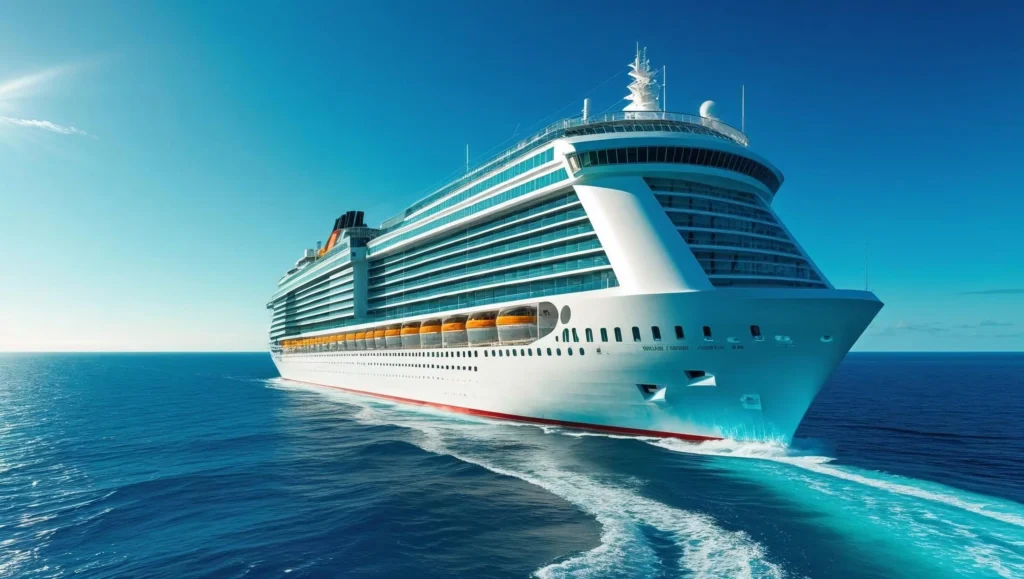Planning a cruise vacation but wondering about the real cost? While cruise advertisements often showcase enticing base prices starting around $50-100 per night, the actual cruise cost can vary dramatically based on numerous factors. Understanding these variables will help you budget effectively and avoid sticker shock when your final bill arrives.
The total cruise cost encompasses much more than the advertised fare. From cabin selection and dining upgrades to shore excursions and gratuities, expenses can quickly add up. This comprehensive guide breaks down every aspect of cruise pricing to help you plan and budget for your perfect cruise vacation.
Base Cruise Fare Breakdown
The foundation of your cruise cost starts with cabin selection, which typically accounts for 60-70% of your total vacation expense. Cruise lines offer four main cabin categories, each with significant price differences.
Interior Cabins represent the most budget-friendly option, with no windows or natural light. These cabins can cost $75-200 per night per person, depending on the cruise line and itinerary. Despite the lack of ocean views, interior cabins offer the same amenities as other cabin types and provide excellent value for travelers who plan to spend most of their time exploring the ship and destinations.
Oceanview Cabins feature a porthole or window, adding natural light and ocean views. Expect to pay 20-40% more than interior cabins, typically ranging from $100-300 per night per person. The added cost provides a more spacious feeling and the ability to watch the ocean during sea days.
Balcony Cabins offer private outdoor space and have become increasingly popular. These accommodations typically cost 50-100% more than interior cabins, ranging from $150-500 per night per person. The private balcony allows for quiet moments overlooking the ocean and often provides better cabin layouts.
Suite Categories vary widely but generally start at twice the cost of balcony cabins and can exceed $1,000 per night per person for luxury accommodations. Suites often include additional perks like priority boarding, specialty restaurant credits, and dedicated concierge service.
Seasonal Pricing Impact significantly affects cruise costs. Peak season cruises during holidays, summer months, and optimal weather windows can cost 50-200% more than off-season sailings. Caribbean cruises peak during winter months, while Mediterranean cruises command highest prices during summer.
Booking Timing Strategy influences your final cruise cost. Booking 12-18 months in advance often provides the best cabin selection and early booking discounts. However, last-minute deals (within 90 days of sailing) can offer substantial savings if you’re flexible with cabin location and willing to risk limited availability.
Major Cruise Lines Cost Comparison
Understanding different cruise line positioning helps set realistic cost expectations and ensures you choose the right cruise experience for your budget.
Budget-Friendly Cruise Lines like Carnival, MSC, and certain Norwegian ships focus on value-oriented cruising. Base fares typically start around $50-150 per night per person, with a casual atmosphere and numerous included activities. These lines offer solid value but may charge extra for amenities that luxury lines include.
Mid-Range Cruise Lines including Royal Caribbean, Celebrity, Holland America, and Princess offer enhanced amenities and service levels. Expect base fares ranging from $100-300 per night per person, with better dining options, more spacious accommodations, and elevated entertainment. These lines strike a balance between value and luxury.
Luxury Cruise Lines such as Viking, Regent Seven Seas, and Silversea provide all-inclusive experiences with base fares starting around $300-800 per night per person. These cruises include specialty dining, beverages, gratuities, and often shore excursions in their base price, potentially offering better overall value despite higher upfront costs.
Ultra-Luxury and Expedition Lines like Seabourn, Ponant, and Lindblad can exceed $1,000 per night per person but provide highly personalized service, unique itineraries, and comprehensive inclusions. These cruises often visit exclusive destinations with expert guides and zodiac landings.

Hidden Costs and Additional Expenses
The advertised cruise cost represents only the beginning of your actual vacation expense. Understanding additional charges helps prevent budget surprises and allows for better financial planning.
Gratuities and Service Charges typically add $12-16 per person per day to your cruise cost. While technically optional, these charges cover housekeeping, dining staff, and other service personnel. Some luxury cruise lines include gratuities, while others automatically add them to your account.
Specialty Dining Costs can significantly impact your budget. While main dining rooms and buffets are included, specialty restaurants charge $30-75 per person for dinner. Many cruise lines offer dining packages that provide better value if you plan multiple specialty dining experiences.
Beverage Packages represent a major additional expense for many cruisers. Alcohol packages typically cost $45-80 per person per day, while non-alcoholic packages range from $20-35 daily. Calculate your expected consumption to determine if packages provide savings over individual purchases.
Shore Excursions vary dramatically in cost, from $40 for basic city tours to $300+ for adventure activities or private experiences. A typical cruise might include 3-5 ports, with excursion costs easily adding $200-800 per person to your vacation expense.
Internet and Communication costs range from $15-30 per day for basic packages to $50+ daily for premium high-speed access. Consider your connectivity needs and whether shore-based wifi might meet your requirements.
Additional Onboard Expenses include spa services ($100-400 per treatment), specialty activities like rock climbing or go-karts, shopping, photography packages, and casino spending. These discretionary expenses can add $500-2000 to your cruise cost depending on your preferences.

Money-Saving Strategies
Smart planning and strategic choices can significantly reduce your overall cruise cost without sacrificing vacation enjoyment.
Optimal Booking Timing varies by destination and cruise line. Generally, booking 12-18 months ahead provides best cabin selection and early bird pricing. However, wave season (January-March) often features the year’s best promotions, and last-minute deals can offer substantial savings for flexible travelers.
Repositioning Cruises occur when ships move between seasonal deployment areas, often offering exceptional value. These longer cruises (10-20 days) typically feature more sea days but cost significantly less per day than traditional itineraries.
Off-Season Sailing Benefits include lower base fares, fewer crowds, and better service ratios. Caribbean cruises during hurricane season, Mediterranean cruises in shoulder months, and Alaska cruises in May or September often provide excellent value.
Interior Cabin Advantages extend beyond lower cost. Many modern ships feature interior cabins with virtual balconies or unique designs. Since you’ll likely spend limited time in your cabin, interior accommodations allow budget reallocation toward experiences and dining.
Cruise Line Promotions frequently include free specialty dining, beverage packages, shore excursion credits, or onboard spending money. These perks can provide $200-1000 in value per stateroom, effectively reducing your cruise cost.
Group Booking Benefits activate when booking 8+ cabins, often providing free cabins, onboard credits, or private party opportunities. Consider organizing friends or family for group savings.
Budgeting for Different Cruise Types
Different cruise destinations and styles require varying budget considerations, with costs influenced by itinerary length, ports visited, and regional pricing differences.
Caribbean Cruise Costs typically range from $100-400 per person per night, depending on cabin category and cruise line. Seven-day Caribbean cruises represent excellent value, with numerous itinerary options and competitive pricing due to high demand and supply. Shore excursions in Caribbean ports generally cost less than European destinations.
Mediterranean and European Cruises command premium pricing during peak season, with costs ranging from $150-600 per person per night. These cruises often feature longer port stays and rich cultural experiences. European shore excursions typically cost more than Caribbean alternatives, and tipping customs may differ.
Alaska Cruise Pricing reflects the destination’s seasonal nature and spectacular scenery. Expect costs of $200-800 per person per night, with Inside Passage cruises generally costing less than Gulf of Alaska itineraries. Alaska shore excursions, particularly helicopter and wildlife viewing tours, can be expensive but offer once-in-a-lifetime experiences.
River Cruise vs. Ocean Cruise Costs show significant differences. River cruises typically cost $200-600 per person per night but include more amenities in their base price, including shore excursions, beverages, and gratuities. Ocean cruises offer lower base fares but require budgeting for additional expenses.
All-Inclusive vs. À la Carte Models affect total cruise cost calculations. Luxury lines with inclusive pricing may appear expensive initially but provide better value when comparing total vacation costs. Budget lines with lower base fares may cost more once additional expenses are included.

Cost Per Day Analysis
Understanding daily cruise costs helps with budgeting and comparison shopping between different vacation options.
Base Fare Inclusions typically cover accommodation, main dining room meals, buffet dining, basic entertainment, fitness center access, and most onboard activities. Understanding what’s included helps identify additional expense areas.
Average Daily Onboard Spending varies significantly by traveler type and preferences. Budget-conscious cruisers might spend $25-50 per person daily on extras, while those enjoying specialty dining, beverages, and spa services could spend $100-200 daily.
Budget Cruise Daily Totals including base fare and minimal extras typically range from $75-150 per person per day. This includes interior cabin accommodation, main dining room meals, and limited additional purchases.
Mid-Range Cruise Daily Costs with balcony accommodations, some specialty dining, and moderate additional spending typically range from $150-300 per person per day. This budget allows for beverage packages, occasional specialty dining, and shore excursions.
Luxury Cruise Daily Expenses can range from $300-800+ per person per day but include comprehensive amenities. When comparing total costs, luxury cruises may provide competitive value given their extensive inclusions.
Family vs. Couple vs. Solo Traveler Costs vary significantly. Families benefit from connecting cabins and kid-friendly amenities but face higher total costs. Couples can share cabin costs and often find the best per-person value. Solo travelers typically pay single supplements but cruise lines increasingly offer dedicated solo cabins and programming.

Conclusion
Understanding the complete picture of cruise costs empowers you to make informed decisions and budget appropriately for your vacation. While base cruise fares provide a starting point, your total expense will likely be 50-100% higher once additional costs are included.
The key to managing cruise costs lies in honest assessment of your preferences and spending habits. Budget-conscious travelers can enjoy excellent cruise experiences by choosing interior cabins, sailing during off-peak times, and limiting additional purchases. Those seeking luxury experiences should factor in the comprehensive value provided by higher-end cruise lines.
Essential Cost-Planning Tips:
- Budget 25-50% above base fare for additional expenses
- Compare total vacation costs rather than just base fares
- Consider what’s included when evaluating different cruise lines
- Book shore excursions independently for potential savings
- Take advantage of onboard credits and package deals
Final Booking Considerations:
- Review all included amenities and restrictions
- Understand cancellation and change policies
- Consider travel insurance for protection
- Plan for gratuities and port expenses
- Research destination-specific costs and customs
With proper planning and realistic budgeting, cruising offers exceptional vacation value and unforgettable experiences. Whether you’re seeking budget-friendly Caribbean adventures or luxury expedition cruising, understanding cruise costs ensures your vacation investment provides maximum enjoyment and lasting memories.
Cruise Cost FAQ – Complete Answers
How much is a 4 day cruise?
A 4-day cruise typically costs $200-800 per person for interior cabins, depending on the cruise line and destination. Budget lines like Carnival start around $50-75 per night, while premium lines charge $100-200 per night. Balcony cabins range from $400-1,200 total per person. Popular 4-day itineraries include Bahamas cruises from Florida ports, offering excellent value for first-time cruisers or weekend getaways.
How much does a 5 day cruise cost?
Five-day cruises cost approximately $250-1,000 per person for interior to balcony accommodations. Interior cabins average $50-100 per night, oceanview cabins $75-150 per night, and balcony cabins $100-200 per night. Western Caribbean and Eastern Caribbean 5-day itineraries are most common, with total costs including taxes and fees typically ranging from $300-1,200 per person before additional expenses.
What is the average cost of a 7 day cruise?
Seven-day cruises represent the most popular cruise length, with average costs of $500-2,100 per person depending on cabin category. Interior cabins average $70-150 per night, balcony cabins $150-300 per night, and suites $300-600+ per night. Caribbean 7-day cruises offer the best value, while Alaska, Mediterranean, and Northern European cruises command premium pricing, especially during peak season.
How much does a 2 week cruise cost?
Two-week cruises range from $1,400-8,000+ per person, depending on destination and cabin category. Transatlantic repositioning cruises offer exceptional value at $100-200 per night, while Mediterranean and Northern European cruises cost $200-400 per night. Luxury 14-day cruises can exceed $500-1,000 per night per person. Longer cruises often provide better per-day value but require larger upfront investment.
How much does a cruise ticket cost?
Cruise ticket prices vary dramatically based on length, destination, cabin type, and cruise line. Basic interior cabin tickets start around $50-75 per night on budget lines, while luxury cruise tickets can exceed $800+ per night. A typical 7-day Caribbean cruise ticket costs $500-1,500 per person, including taxes and port fees. Premium and luxury lines charge 2-10 times more than budget options.
How much should a 3 day cruise cost?
Three-day cruises typically cost $150-600 per person for interior to balcony cabins. Budget cruise lines offer 3-day Bahamas cruises starting around $179-299 per person, while premium lines charge $300-500+. These short cruises are perfect for cruise newcomers or quick getaways, with most departing from Florida to Nassau or private islands. Weekend pricing may be 20-50% higher than weekday departures.
How much did the 9 month cruise cost?
The Royal Caribbean’s 2023-2024 “Ultimate World Cruise” (274 nights) started at approximately $60,000 per person for interior cabins, with balcony cabins costing $90,000-120,000+ per person. Suite accommodations exceeded $200,000 per person. These ultra-long cruises include all meals, entertainment, and most gratuities, but shore excursions and specialty dining cost extra. The per-night cost averages $220-730 depending on cabin category.
How much does a cruise cost for a family of 4?
A family of 4 typically spends $2,000-8,000 on a 7-day Caribbean cruise, depending on cabin selection and cruise line. Two connecting interior cabins cost $1,600-3,200 total, while family balcony cabins range from $2,400-5,600. Additional costs include gratuities ($168-224), specialty dining ($200-600), beverage packages for adults ($300-560), shore excursions ($400-1,200), and onboard activities ($200-800). Budget $500-1,500 extra beyond base fares.
How much does a Disney cruise cost for a family of 4?
Disney cruises cost significantly more than mainstream lines, with family of 4 prices ranging from $4,000-12,000+ for 7-day cruises. Interior cabins start around $800-1,000 per person, while balcony cabins cost $1,200-2,000+ per person. Disney’s premium pricing reflects enhanced family programming, character experiences, exclusive private islands, and superior service. Shorter 3-4 day Disney cruises cost $2,500-6,000 for families of 4.
What is the cheapest month to go on a cruise?
The cheapest cruise months are typically January (post-New Year), February, early March, September, and early November. Hurricane season (June-November) offers Caribbean cruise savings, while Mediterranean cruises are cheapest in early spring and late fall. Avoid peak times like Christmas/New Year, summer months, and school holidays. Repositioning cruises in April-May and September-October offer exceptional value as ships move between seasonal deployment areas.
How much does an all-inclusive cruise cost?
All-inclusive cruises range from $200-1,500+ per person per night, depending on the cruise line and inclusions. Luxury lines like Regent Seven Seas and Silversea include specialty dining, premium beverages, gratuities, shore excursions, and wifi, starting around $400-800 per night. Ultra-luxury lines like Seabourn cost $600-1,500+ per night but include comprehensive amenities. While expensive upfront, all-inclusive cruises can provide better value than mainstream lines once extras are added.
How much does a cruise cost to build?
Modern cruise ships cost $800 million to $1.5 billion to build, depending on size and amenities. Royal Caribbean’s Icon-class ships cost approximately $1.35 billion each, while smaller premium ships cost $600-900 million. Construction takes 2-4 years, with costs including design, materials, labor, and advanced technology. Luxury and expedition ships cost $300-600 million, while river cruise ships cost $15-50 million depending on size and luxury level.
How much profit does one cruise ship make?
Large cruise ships generate $200-500 million in annual revenue, with profit margins typically 8-15% of revenue. A typical large ship might generate $20-75 million in annual profit, depending on occupancy rates, onboard spending, and operational efficiency. Profitability depends on fuel costs, labor expenses, maintenance, port fees, and passenger capacity utilization. Premium and luxury ships often achieve higher profit margins through increased onboard revenue per guest.
How much did it cost to build the Royal Caribbean cruise ship?
Royal Caribbean’s newest ships cost $1-1.4 billion each. The Icon of the Seas cost approximately $1.35 billion, while Oasis-class ships cost $1.2-1.4 billion. Voyager and Explorer-class ships cost $500-800 million. These costs reflect advanced technology, environmental systems, innovative amenities, and massive scale. Royal Caribbean typically orders ships in pairs or series to reduce per-unit costs through economies of scale and shared development expenses.

